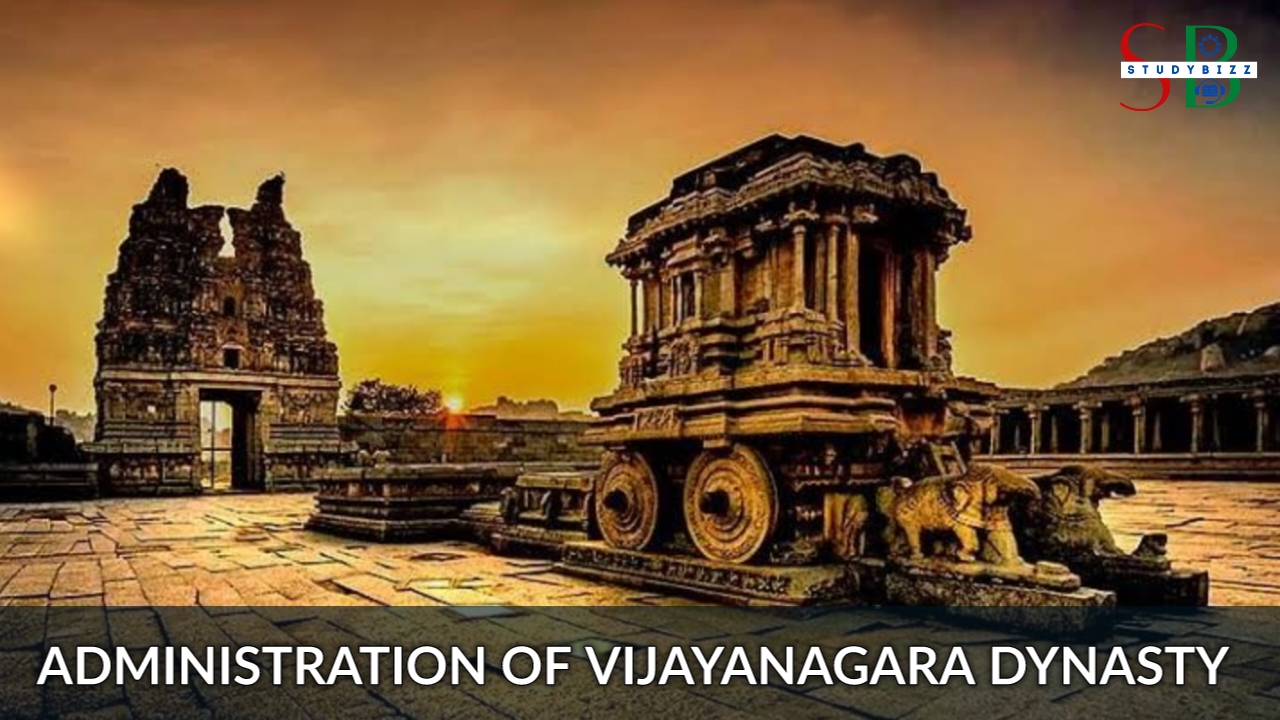The Vijayanagara Empire was a late medieval Hindu empire that ruled most of the southern part of India. It was established in 1336 by the brothers Harihara I and Bukka Raya I of the Sangama dynasty. Four different dynasties Sangama, Saluva, Tuluva, Aravidu ruled for around 3 centuries between 1336 till 1646 AD.
Let us learn about the Administration of Vijayanagara Empire.
Administration of VijayaNagara Empire
Under the vijayanagara empire the King enjoyed absolute authority legislative judiciary and executive powers.Succession to The throne was generally on the principle of hereditary.
The king was assisted by the council of ministers. The entire Kingdom was divided into various administrative divisions called mandalams.
Below is the hierarchy of division for the administrative convenience.
Empire –> Mandalams –> Nadus –> Sthalas –> Gramas
The governor of the mandalam was called mandaleshwara or nayaka. The governors were given full powers.
Revenue system during the Vijayanagaras
Land revenue was the primary source of income for the Kingdom. tributes and gifts from vessels and feudal chiefs, customs collected at the ports, taxes on various professions are additional income.
Land Revenue was 1/6th of the total produce.
Judiciary during the Vijayanagaras
The king administered the justice impartiality. He presides over the Sabha, the highest court of the appeal.
Dharma Shastras were maintained based on which cases were decided. At the lower level there were village courts, guild organisations, caste courts etc.
Military administration of Vijayanagaras
The military has a well organised and efficient standing army. Nadu Prabhu (incharge of Nadus) generally protected from invasions.
The head of the military or chief was called Nayak or palaiyagars. They were paid tributes in the form of land called Amaram. They had their own rights on the land. The other army was paid in cash.
Ayagar system was prevalent at village level. Ayagars took care of the administration in villages. Their position was hereditary.





Leave a Reply